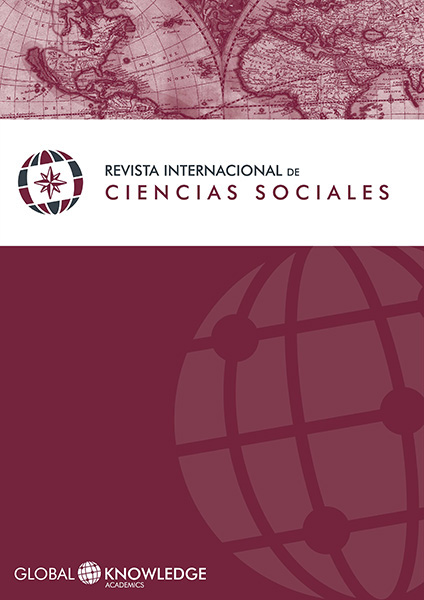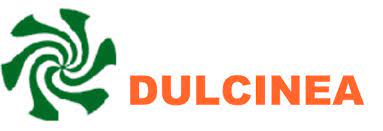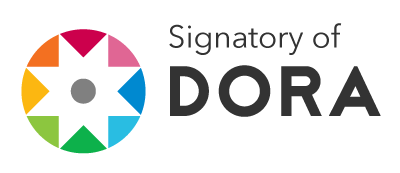Health Education at School as Social Intervention
DOI:
https://doi.org/10.37467/gka-revsocial.v2.1225Keywords:
Language, Social Media, Global Village, Communication, Discourse, ScriptureAbstract
Schools with families are socializing areas where it takes place the development of people in their early stages, exerting an important role in the configuration of behavior and social values of children and adolescents. When we consider the health as understood by the WHO, that is, as a state of complete physical, mental and social wellness and not only as the absence of disease we see that the attainment of good educational results by a school save a very close relationship with the attainment of optimal levels of health within the educational community. According to this fact schools that incorporate the health promotion as part of its educational are building the bases that will enable them better achieve the educational objectives, including academics. On the other hand in this time of life people are more receptive to learning being the time of the vital development which are acquired the major lifestyle that will be consolidated over the years (physical activity, diet, etc.). Also this is an area of social intervention that have health agents which have highly qualified from the pedagogical point of view: teachers, whether in the kindergarten level, and Primary and Secondary level. In this context the main objective of the Health Education, is to develop activities and encourage the students to achieve the highest attainable standard of health, through the acquisition of knowledge and skills that promote choice and adoption of healthy lifestyles; Seeking participation, interaction and social integration, and the ability to work critically and creatively, and the search for solutions. Schools, with the home are two of the key places where it takes place the individual and social development of people in its earliest stages, exerting an important role the configuration of the conduct and the social values of childhood, adolescence and youth.
Downloads
Global Statistics ℹ️
|
1657
Views
|
1488
Downloads
|
|
3145
Total
|
|
References
Bandura, A. (1982). Teoría del aprendizaje social. Madrid: Espasa-Calpe.
Booth, M. y Samdal, O. (1997). “Health promoting schools in Australia: models and measurement”. Australian and New Zealand Journal of Public Health, 21(4), 365-370. DOI: https://doi.org/10.1111/j.1467-842X.1997.tb01716.x
Colomer, C. y Álvarez Dardet, C. (2001). Promoción de la salud y cambio social: Barcelona. Masson.
Connell, D.B., Turner, R.R. y Mason, E.F. (1985). “Summary of findings of the School Health Education Evaluation: health promotion effectiveness, implementation, and costs”. J. Sch. Health. Oct. 55(8), 316-21. DOI: https://doi.org/10.1111/j.1746-1561.1985.tb05656.x
Gallego Diéguez, J. (1999). Planificación de la educación para la salud en la escuela en Aragón (1.985-99). Tesis presentada al Máster in Educazione Sanitaria. Perugia: Centro Sperimentale per l´Educazione Sanitaria Interuniversitario dell´Unversitá degli studi di Perugia.
García García, I. (1998). “Promoción de la Salud en el medio escolar”, Rev. Esp. Salud Pública, 285-87. DOI: https://doi.org/10.1590/S1135-57271998000400001
Gavidia Catalán, V. (2003). “La Educación para la salud en los manuales escolares españoles: Madrid”. Rev. Esp. de Salud Pública, 77, 275-285. DOI: https://doi.org/10.1590/S1135-57272003000200010
Gavidia Catalán, V. (2001). “La Transversalidad y la Escuela Promotora de salud: Madrid”. Rev. Esp. de Salud Pública, Madrid, 505-16. DOI: https://doi.org/10.1590/S1135-57272001000600003
Gavidia Catalán, V. (2002). “La escuela promotora de salud”. Didáctica de las ciencias experimentales y sociales, 16, 83-97.
Green, L.W., Wilson, A.L. y Lovato, C.Y. (1986). “What changes can health promotion achieve and how long do these changes last? The tradeoffs between expediency and durability”. Preventive Medicine, 15, 508-21. DOI: https://doi.org/10.1016/0091-7435(86)90027-7
Kickbusch, I. (2003). “Models for population health. The contribution of the World Health Organization to a New Public Health and Health promotion”. American Journal of Public Health , 93(3), 383-388. DOI: https://doi.org/10.2105/AJPH.93.3.383
Ley de Salud Escolar (1994). Ley 1/1994 de 28 de marzo de Salud Escolar (DOGV n1 2241, de 7 de abril).
Ley General de Sanidad (1986). Ley 14/1986, de 25 de abril (B.O.E nº 102 de 29 de abril.
Ley Orgánica del Derecho a la Educación – España (1985). BOE Nº Publicado el 04/07/85
Ley Orgánica de Educación (LOE) (2006). Ley 2/2006 de 3 de mayo. BOE nº 106.
Ley Orgánica General del Sistema Educativo (LOGSE) (1990). Ley 1/1990 de 3 de Octubre (B.O.E de 4 de Octubre de 1990) Octubre de 1990. LODE.
LOECE (1980). Ley Orgánica 5/1980, de la Jefatura del Estado, de 19 de Junio, por la que se regula el Estatuto de Centros Escolares.
Ley Orgánica 8/1985, de 3 de julio, reguladora del Derecho a la Educación (1985). Publicado en: BOE número 159 de 4/7/1985.
LOPEGCE (1995). Ley Orgánica 20-11-1995, Ley 9/1995, de 20 de noviembre, de la Participación, la Evaluación y Gobierno de los Centros Docentes, (BOE 21-11-95).
Ley Orgánica 5/1980, de 19 de junio, por la que se regula el Estatuto de Centros Escolares – LOECE (BOE 27-VI-80).
Ley Orgánica 10/2002, de 23 de diciembre, de Calidad de la Educación (LOCE) (BOE de 24 de diciembre).
Maiman, L.A., Becker, A.M., Kirscht, J.P. et al. (1977). “Scales for Measuring Health Belief Model Dimensions: A Test of Predictive Value, Internal Consistency and Relationships among Beliefs”. Health Education Monographs, 5, 215–230. DOI: https://doi.org/10.1177/109019817700500303
Ministerio de Educación Política Social y Deporte y Ministerio de Sanidad (2008). Diagnóstico de situación sobre avances conseguidos, necesidades y retos en promoción y educación para la salud en la escuela en España.
Nutbeam, D. (1992). “The health promoting school: closing the gap between theory and practice”. Health Promotion International, 7, 151-153. DOI: https://doi.org/10.1093/heapro/7.3.151
Organización Mundial de la Salud (OMS). (1946). Carta de Constitución: Ginebra.
Organización Mundial de la Salud (OMS). (1998). Promoción de la Salud. Glosario. Ginebra: OMS.
Organización Mundial de la Salud (OMS). (1986). Carta de Ottawa para la promoción de la Salud. Ginebra: OMS.
Organización Mundial de la Salud (OMS). (1997). Declaración de Yakarta sobre promoción de la Salud en el siglo XXI. IV Conferencia Internacional de Promoción de la Salud. Yakarta (Indonesia): OMS.
Organización para la Cooperación y el Desarrollo Económicos (2001). Conocimientos y destrezas para la vida: primeros resultados del Proyecto Pisa 2000: Resumen de resultados / OCDE. Madrid: Ministerio de Educación, Cultura y Deporte.
Perea, R., Quesada, J. y Bouché, H. (2004). Educación para la Salud. Un reto de nuestro tiempo. Madrid: Ediciones Díaz de Santos.
Real Decreto 1030/2006 de 15 de septiembre de 2006.
Rene Dubos (1959). The mirage of health: Utopias, progress and biological change. Harper.
Salleras, L. (1985). Educación Sanitaria: Principios métodos y aplicaciones. Madrid: Editorial Díaz Santos.
San Martin, H. y Pastor, V. (1988). Salud Comunitaria. Teoría y Práctica. Madrid: Editorial Díaz Santos.
St. Leger, L. (2001). Schools, health literancy and public health. Health Promotion International, 16(2), 197-205. DOI: https://doi.org/10.1093/heapro/16.2.197
Talavera, M. y Gavidia, V. (2007). “Dificultades para el desarrollo de la educación para la salud en la escuela. Opiniones del profesorado”. Didáctica de las ciencias experimentales y sociales, 21, 119-118.
The School Health Working Group (1996). The WHO Expert Committee on Comprehensive School Healtd Education and Promotion. Research to Improve Implementation and Effectiveness of School Health Programmes . Geneva: World Health Organization.
Unión Internacional de Promoción de la Salud y Educación para la Salud (2000). La Evidencia de la Eficacia de la Promoción de la Salud. Configurando la Salud Pública en una Nueva Europa. Parte dos: libro de evidencia . Madrid: Ministerio de Sanidad y Consumo.
World Health Organization (2002). “Skills for Health. Skills-based health education including life skills: An important component of a child-friendly/health promotion school”. Information Series on School Health , 9.
World Health Organization (1984). Health Promotion: A discussion document on the concepts and principles. Copenhagen: WHO Regional Office for Europe.
World Health Organization (1986). “Ottawa Charter for Health Promotion”. First International Conference on Health Promotion. Ottawa, Canadá: 1721 November.
WHO Regional Office for Europe (1996). “Regional guidelines: development of healthpromoting schools: a framework for action. Manila, WHO Regional Office for the Western Pacific”. Health Promoting Schools , Series 5.
WHO Regional Office for Europe (2005). What are the main factors that influence the implementation of disease prevention and health promotion programmes in children and adolescents? Copenhagen: WHO Regional Office for Europe.
Downloads
Published
How to Cite
Issue
Section
License
Those authors who publish in this journal accept the following terms:
-
Authors retain copyright.
-
Authors transfer to the journal the right of first publication. The journal also owns the publishing rights.
-
All published contents are governed by an Attribution-NoDerivatives 4.0 International License.
Access the informative version and legal text of the license. By virtue of this, third parties are allowed to use what is published as long as they mention the authorship of the work and the first publication in this journal. If you transform the material, you may not distribute the modified work. -
Authors may make other independent and additional contractual arrangements for non-exclusive distribution of the version of the article published in this journal (e.g., inclusion in an institutional repository or publication in a book) as long as they clearly indicate that the work was first published in this journal.
- Authors are allowed and recommended to publish their work on the Internet (for example on institutional and personal websites), following the publication of, and referencing the journal, as this could lead to constructive exchanges and a more extensive and quick circulation of published works (see The Effect of Open Access).













